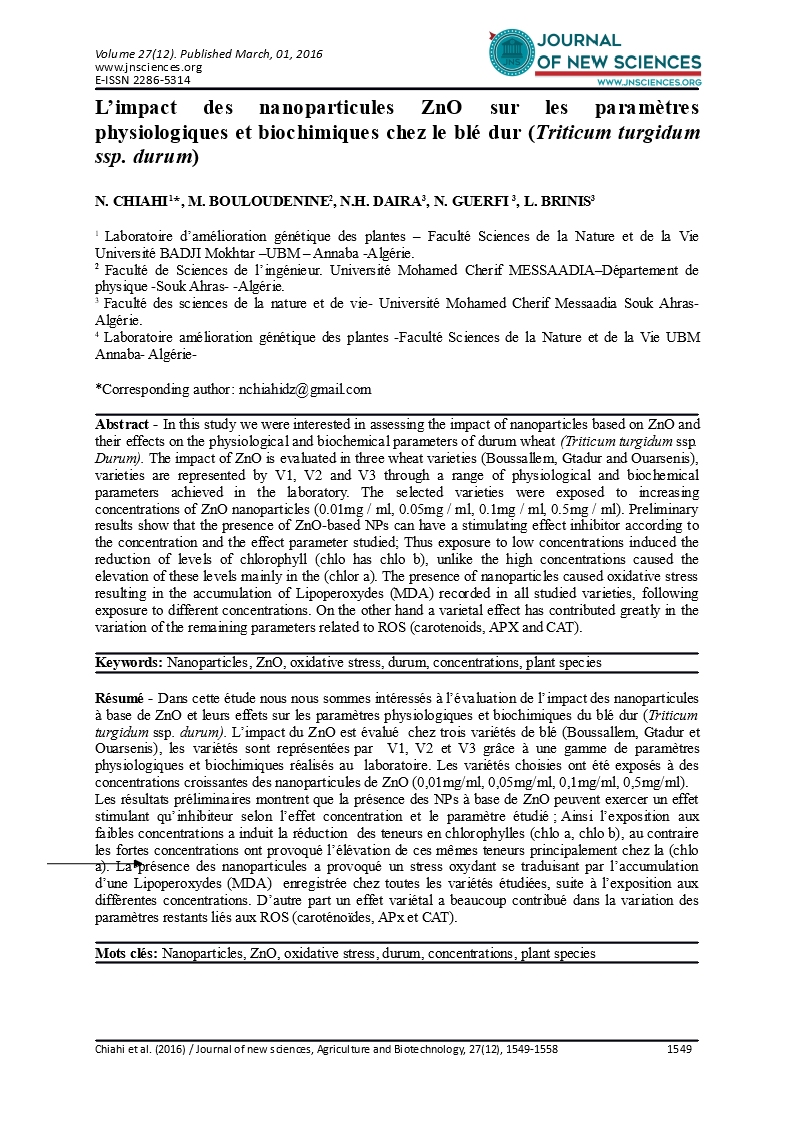- Category: Volume 27
- Hits: 7181
Physicochemical, microbiological and ecotoxicological characterization of urban sewage sludge destined for agricultural reuse

R.I. Zoghlami1,3*
S. Mokni-Tlili1
H. Hamdi*
M. Naceur Khelil2
N. Ben Aissa3
N. Jedidi1
1 Water Research and Technology Center, University of Carthage, P.O.Box 273, Soliman 8020, Tunisia,, inesrahma.zoghlami@gmail.com, helmi.hamdi@certe.rnrt.tn, mt_sonia@yahoo.fr, Naceur.Jedidi@certe.rnrt.tn
2 National Institute for Research in Rural Engineering, Water and Forestry, P.O.Box 10, Ariana 2080, Tunisia, khelil_mn@yahoo.fr
3 National Institute of Agronomy, 43 Av. Charles Nicolle, 1002 Tunis, Tunisia
Abstract - Sewage sludge characterization is important for an efficient use as an agricultural soil amendment. The present work reports on the outcomes of a preliminary investigation of an urban sewage sludge that has been reused by local farmers as an organic amendment. Polymorphism analysis of isolated bacteria showed the existence of two major phenotypic groups: a group P (non-mycelia bacteria) and a group G (mycelial bacteria), also showing that the 50 isolated strains were more sensitive to copper than to zinc. This sludge was very phytotoxic to lettuce seeds; the effective concentration (EC50) was very low around 0.36%. This may be caused partly by heavy metal contents which were, however, in accordance with French and Tunisian standards or by the high salinity of the sludge which could be an obstacle to its agricultural reuse. On the other hand, C/N ratio was equal to 15 indicating that the nitrogen supplied by this sludge provides good decomposition of the organic matter, which is an important indicator to improve the fertility of agricultural soils.
Keywords: sewage sludge, polymorphism, heavy metals, Phytotoxicity, C/N ratio

